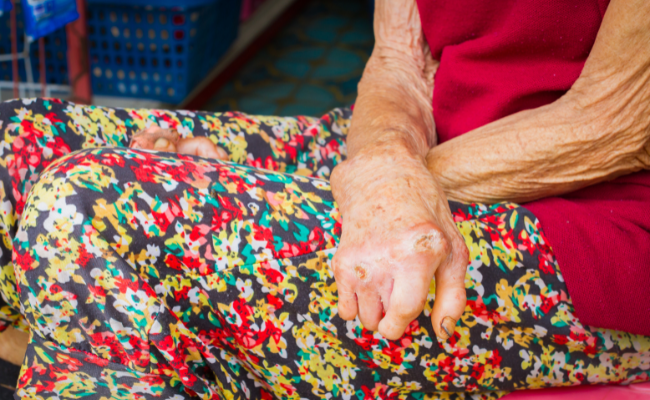How to Treat Leprosy?
- October 31, 2023
- No Comments

What is Leprosy?
Leprosy, recognized as Hansen's disease, is a persistent infectious ailment originating from the bacterium Mycobacterium leprae. It exerts its impact on diverse body parts, encompassing the skin, peripheral nerves, upper respiratory tract mucosa, and eyes. Despite its ancient roots, leprosy continues to pose a significant global health challenge, particularly in specific regions. The disease has endured a historical association with stigma and societal isolation, primarily arising from misunderstandings regarding its contagious nature.
This infectious disease, caused by Mycobacterium leprae, manifests in disfiguring sores and nerve damage, affecting the eyes, skin, mucous membranes, and nerves. Despite its ancient origins, leprosy has been a subject of misunderstanding, resulting in the historical isolation and societal exclusion of those affected. The persistent challenges posed by leprosy underscore the need for ongoing efforts to dispel misconceptions and promote a more compassionate and informed approach to the management of this complex disease.
Why is Leprosy a Concern?
Leprosy's historical stigma has persisted, impacting the lives of affected individuals who often face discrimination and exclusion. While leprosy is not as contagious as once believed, its potential to cause significant disabilities if left untreated is a genuine concern. Early detection and appropriate treatment are critical not only for the affected individual's well-being but also to prevent further transmission and dispel myths surrounding the disease.
How is Leprosy Transmitted?
Leprosy primarily spreads through respiratory droplets released when an untreated person with the disease coughs or sneezes. The exact transmission mechanism is not fully elucidated, and it is believed that prolonged close contact with an infected person is necessary for transmission to occur. Additionally, genetic factors may influence an individual's susceptibility to the disease. Understanding the modes of transmission is crucial for developing effective treatment and prevention strategies.
Treatment Solutions for Leprosy
- Multi-Drug Therapy (MDT): At the forefront of leprosy treatment is Multi-Drug Therapy, a combination of antibiotics that target the Mycobacterium leprae bacterium. This regimen typically includes drugs like dapsone, rifampicin, and clofazimine. The World Health Organization endorses a standard MDT protocol, the duration of which varies depending on the type and severity of leprosy.
- Early Detection and Diagnosis: Early detection is paramount for successful leprosy treatment and to prevent complications. Healthcare professionals employ clinical and histopathological examinations, along with tools like skin biopsies and slit-skin smears, to diagnose leprosy. Early diagnosis allows for timely intervention, reducing the risk of disabilities.
- Specialized Care for Complications: Some individuals with leprosy may develop complications such as nerve damage, deformities, and disabilities. Specialized care, including physiotherapy and reconstructive surgery, becomes necessary to address these issues and improve the quality of life for affected individuals.
- Patient Education and Supportive Care: Patient education is a crucial component of leprosy treatment. Understanding the importance of completing the full course of treatment and attending regular follow-up appointments empowers individuals in their journey towards recovery. Supportive care, encompassing wound management and addressing secondary infections, is integral to overall treatment success.
Benefits of Timely Leprosy Treatment
- Prevention of Disabilities: Timely initiation of treatment with MDT is pivotal in preventing the progression of leprosy and reducing the risk of disabilities. Nerve damage, a common complication, can lead to loss of sensation and muscle weakness. Proper treatment can mitigate these effects, preventing long-term disabilities.
- Reduction of Transmission: Effective treatment not only benefits the individual but also plays a crucial role in reducing the transmission of leprosy within communities. Early diagnosis and treatment decrease the infectious period, lowering the likelihood of spreading the disease to others. This is a vital component in public health efforts to control leprosy.
- Social Integration: Addressing leprosy promptly contributes to social integration. By dispelling myths and reducing the stigma surrounding the disease, individuals treated for leprosy can lead fulfilling lives without fear of discrimination. Community education and awareness initiatives are essential in fostering an environment of inclusivity.
- Improved Quality of Life: Through a combination of medical treatment, supportive care, and rehabilitation, individuals affected by leprosy can experience an improved quality of life. This includes the prevention of disabilities, the management of complications, and psychological support. A comprehensive approach to healthcare ensures not only physical well-being but also mental and social well-being.
Comments (0)